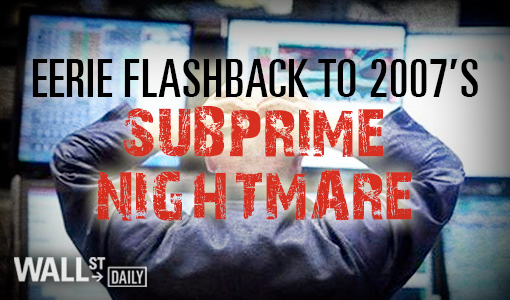
On Tuesday, Wall Street celebrated the creation of the nation’s largest subprime lender.
Citigroup (C) announced that it’ll sell its subprime unit, OneMain, to Springleaf Holdings (LEAF) for $4.25 billion.
Keep in mind, Springleaf was the former subprime unit of American International Group (AIG). And both Citigroup and AIG cost America $100 billion in bailouts during the crash.
In other words, the ruins of the 2007 market crash just created a new entity.
Oddly enough, Wall Street didn’t seem to mind. LEAF gapped up by more than 32% on the news and finished $12.19 higher than Monday’s close. So what happens next?
A Big Deal for Springleaf…
The deal will give the Indiana-based lender 1,967 branch locations across 43 states once the merger is complete.
And in a nod to investors, the deal should prove immediately accretive to the company’s bottom line. Estimates show that Springleaf’s profits will more than double – going from $2.43 to north of $5 per share.
Furthermore, with post-recession wage growth showing miniscule improvement, the demand for loans among income-strapped borrowers with thin or impaired credit remains high.
In fact,Â
The Wall Street Journal reported in February that loans to subprime borrowers in the first 11 months of 2014 reached their highest level since the start of the financial crisis in 2007. There are more than 50 million consumer loans totaling some $189 billion.
Now, while the Fed estimates the entire subprime segment at more than $1.29 trillion in size, the borrowing today has very little in common with the kind of reckless loan originations that helped precipitate the financial meltdown in 2007.
In 2007, loans were reaching levels above $200,000, with loan terms reaching 30 years. But the average personal loan at Springleaf is just $4,000 to $5,000 in size, with a loan term of about 40 months. That’s pretty modest.

